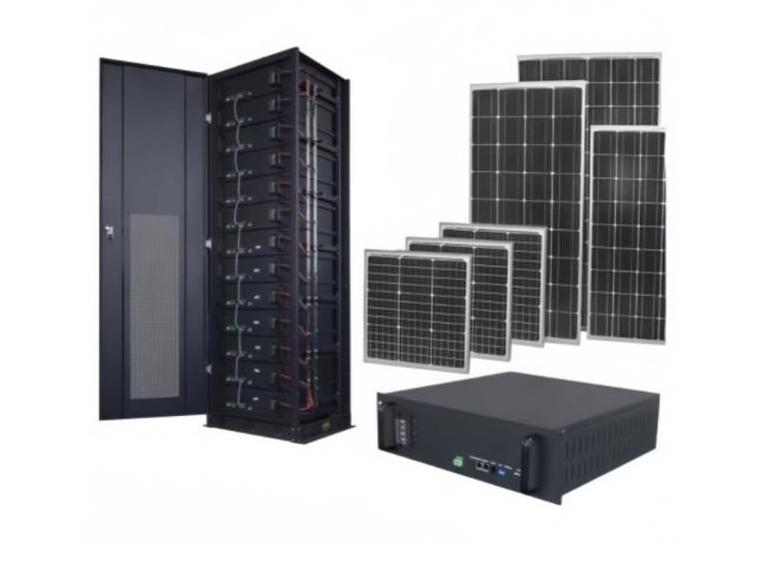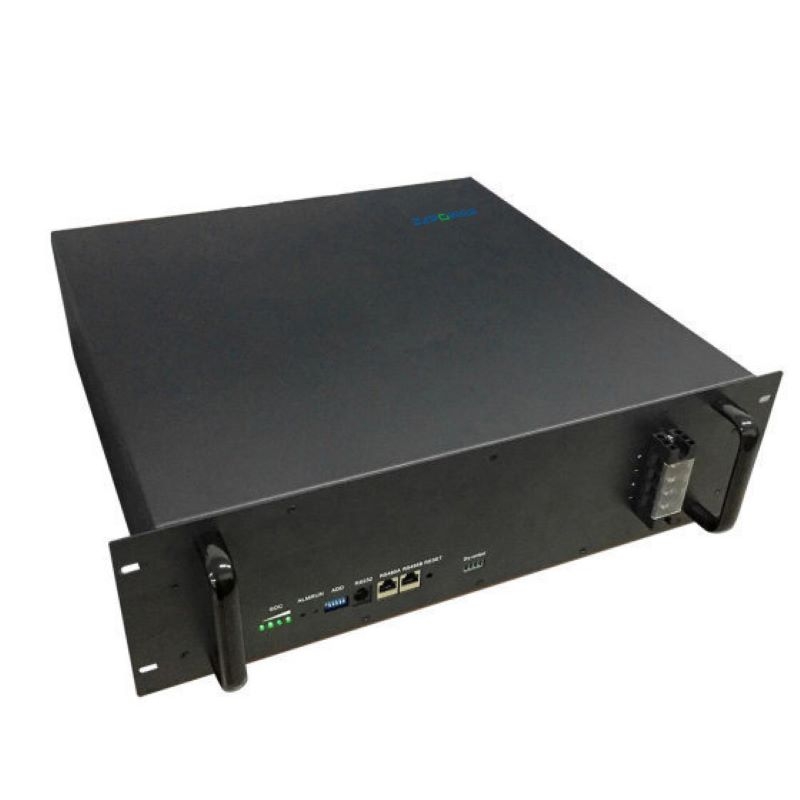

A charge cycle for a 48V 100Ah lithium battery is when you juice it up to full and then use it until it drops to a certain point. Usually, that’s when it hits its Depth of Discharge (DoD) limit—often around 80% to keep it running smoothly. These batteries pack a serious punch with energy and outlast those clunky old lead-acid ones by a mile. Each cycle nibbles away at the battery a bit. Over time, it holds a little less power.
Knowing about charge cycles helps you guess how long your battery will hang in there. Picture this: you use half the battery’s juice one day and recharge it. That’s just half a cycle. Do that twice, and you’ve got one full cycle. This setup makes lithium batteries crazy versatile for all kinds of stuff.
How long your lithium battery lasts depends a ton on how many charge cycles it goes through. A solid 48V 100Ah lithium battery can keep going for 3,500 cycles or more if you treat it nice. That’s way better than plain old lead-acid batteries, which poop out after 500-700 cycles. Since lithium batteries stick around so long, you’re not shelling out for replacements as often. That’s cash in your pocket.
But stuff like heat, how much power you use, and how fast you charge can mess with how quick you use up those cycles. For example, draining nearly all the battery’s juice a lot can tire it out faster. That stresses its insides. Same deal with super hot or freezing temps—they can throw the battery’s chemistry off. That makes it less peppy and tough.
Temperature is a big deal for keeping your lithium battery happy. These batteries do fine between -10°C and 50°C. But let’s be real—room temp, like 20°C to 25°C, is where they thrive. Too much heat gets the battery’s chemicals all worked up. That can wreck it or even cause a meltdown. Crazy cold temps, though? They slow everything down and cut the battery’s power for a bit.
Some slick cooling systems can keep things chill when the battery’s working or charging. Certain energy setups have fans or insulation built in to handle rough conditions. Oh, and don’t park your battery in the sun or next to a heater. That’s just asking for trouble.
Depth of Discharge (DoD) is how much juice you pull from a full battery before plugging it back in. Like, using half the power means a 50% DoD. Keeping DoD chill can seriously stretch your battery’s life. Folks say aiming for about 80% DoD hits the sweet spot. You get plenty of power without wearing the battery out.
If you use too much juice, it puts a strain on the battery’s cells. That makes them wear out quicker and work less well. Lots of new lithium batteries come with a Battery Management System (BMS). It watches how much power you’re using and stops you from going overboard. It also keeps the battery from overcharging by cutting power when it’s full.
For things that need constant cycling—like solar setups or electric cars—set the DoD to save some power. That keeps the battery strong while giving you what you need.
Lithium Iron Phosphate (LiFePO4) batteries are total rockstars compared to other lithium types, like Lithium Nickel Manganese Cobalt Oxide (NMC) or Lithium Cobalt Oxide (LCO). The EL series 48V 50AH-100AH lithium battery can crank out up to 3,500 cycles. That’s five times better than your average lead-acid battery. LiFePO4’s sturdy build keeps it from overheating or breaking down over time.
Meanwhile, NMC and LCO batteries don’t last as long. They hold more energy but can’t handle heat as well. For example, NMC batteries might hit 1,000–2,000 cycles if you’re lucky. But they lose steam faster if you drain them a ton or let them get hot. LiFePO4 batteries keep on trucking, even in rough conditions. That’s why they’re awesome for things like solar storage or electric vehicles.
Plus, LiFePO4 batteries are way safer. They don’t overheat much and are super unlikely to catch fire. That makes them a trusty pick for homes or businesses. People love LiFePO4 when they want something that lasts and won’t let them down.
Put a 48V 100Ah lithium battery next to a lead-acid one, and it’s no contest. Lead-acid batteries tap out at about 500-700 cycles. But high-quality lithium ones, like the EL series, can hit 3,500 cycles or more. That means way fewer replacements and more money saved over time.
Lead-acid batteries also hate deep discharges. You’re stuck with about 50% DoD to keep them safe. Lithium batteries? They’re cool with up to 80% DoD. That gives you more power to play with without hurting the battery. And get this—lithium batteries are up to three times lighter than lead-acid ones. That makes them a breeze to set up or move around.
Yeah, lithium batteries might hit your wallet harder at first. But they last so long and work so well, they save you money in the end. In setups like solar power, where you’re cycling every day, the lower upkeep and replacement costs make it a no-brainer.

Taking good care of your 48V 100Ah lithium battery is the secret to tons of charge cycles. First off, charge it in the right spot. Keep it between -10°C and 50°C to avoid stressing its guts. Heat makes the battery’s chemicals go nuts, which can wreck it or cut its power.
Check the Depth of Discharge (DoD) regularly. Sticking to about 80% DoD is a great balance. You get enough juice while keeping the battery in tip-top shape. Draining it too much is rough on the cells. Overcharging can make it too hot or puffy. Grab a charger built for lithium batteries. It’ll keep the voltage perfect.
Give the terminals a quick clean every so often. That stops gunk from messing with the connections. If you’re storing the battery, keep it at about 50% charge in a cool, dry place. That slows down self-discharge and keeps the cells happy.
A Battery Management System (BMS) is like a superhero for your lithium battery. It keeps tabs on stuff like voltage, current, temp, and how full the battery is. That way, every cell stays in the safe zone. Lots of modern lithium batteries have a BMS that stops overcharging. It shuts off power when the battery’s maxed out.
The BMS also balances the cells. It shuffles charge around so no cell gets too full or too empty. That keeps wear even and the battery’s power high. Some BMS setups even catch problems early—like short circuits or overheating—before they turn into a mess.
ZLPOWER’s EL series 48V 50AH-100AH lithium batteries exemplify excellence in energy storage powers with their remarkable cycle life of up to 3,500 times—five times longer than traditional lead-acid alternatives. These lightweight yet high-density batteries offer three times the capacity within the same volume as lead-acid counterparts, making them ideal for diverse applications ranging from renewable energy systems to backup power solutions. With ZLPOWER‘s commitment to quality and innovation, investing in their EL series ensures superior performance and long-term savings for your energy needs. Any needs you can contact ZLPOWER!
A: A charge cycle is when you fully charge your 48V 100Ah lithium battery and then use it until it hits a specific low point, usually the Depth of Discharge (DoD) limit, like 80%. If you use half the battery’s power and recharge, that’s half a cycle. Two of those make one full cycle.
A: A high-quality 48V 100Ah lithium battery, like those in the LiFePO4 EL series, can last up to 3,500 cycles or more if you take care of it. That’s way more than lead-acid batteries, which typically manage only 500-700 cycles.
A: Depth of Discharge (DoD) is how much power you use before recharging. Sticking to around 80% DoD is ideal—it gives you plenty of juice while keeping the battery healthy. Draining it too much, like past 80%, stresses the cells and shortens the battery’s life.